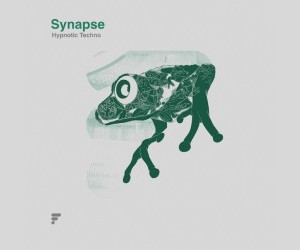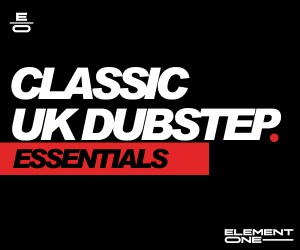Confused about copyright in the music industry? Unsure how similar your song can sound to an existing one before you're infringing upon copyright? Jay Asher explores 5 common beliefs here.
It would be absolutely great if every songwriter knew exactly how much of a song can be identical or even similar to another song without it becoming a copyright infringement. Unfortunately, it is a grey area in the law that is very much a case by case thing. That said, there are certain beliefs that prevail, some of which are actually true while others are not. Here are 5 that frequently appear.
1. There is a preset number of measures before it is a violation
This is simply not true. There is no set amount of measures at which point a song that was not a copyright violation becomes a song that is a copyright violation.
2. Song Titles and Chord Progressions are not copyright protected
This is true. There have been several successful songs named e.g. “All Through The Night”, including the famous Cole Porter song and one written by Jules Shear that Cyndi Lauper had a hit with. I actually have written one myself with this title!
Ditto for chord progressions. There must be hundreds of songs that were hits in the ’50s and early ’60s that followed the familiar “ice cream changes” progression of I-vi-IV-V7. Thin “In The Still Of The Night” (another song that shares its title with others), “Donna”, “Silhouettes”, “This Boy” just for starters. Also the chords from the “Pachelbel Canon in D” have been used numerous times. Think “A Whiter Shade Of Pale.”
Roy Clark’s “Yesterday When I Was Young” has the exact same chords as the standard song “Autumn Leaves” but the melody is different, so no copyright violation. Makes for a great contrapuntal medley however.
3. Individual Arrangement Parts Are Not Copyright Protected
Mostly true, but there are exceptions. For instance, if a melodic bass line is determined to essentially be the “melody” in the song when it appears it can be a violation of copyright. This is what happened in the recent hotly disputed case of Robin Thicke and Pharrell Williams’ “Blurred Lines” vs. Marin Gaye’s “Got To Give It Up.”
On the other hand, the iconic opening drum lick to Ronnie & The Ronettes’ “Be My Baby” has been used a ton of times without a successful lawsuit for ripping it off (err…”borrowing it”.)
4. Lyrics Are Protected By Copyright
Again, absolutely true... except for when it is not. ☺ James Taylor wrote a song for his first album, recorded for The Beatles’ Apple Records, called “Something In The Way She Moves.” Enter George Harrison, who used it as the opening line for his most widely recorded song “Something” on The Beatles’ Abbey Road album.
From Wikipedia: James Taylor has stated, "I never thought for a second that George intended to do that. I don't think he intentionally ripped anything off, and all music is borrowed from other music. So completely I let it pass."[ Taylor also acknowledged that the ending of "Something in the Way She Moves" was taken from the Beatles' song "I Feel Fine” and so "what goes around comes around."
Most of the lawsuits over lyrics seem to be less about partial lyric stealing than entire lyric stealing and end up being a case of someone allegedly giving lyrics to another songwriter without informing the original songwriter.
Currently, there are reports that a songwriter named Katie Farrah Sopher is suing Sam Smith and Eliza Doolittle, saying that her boyfriend gave them her songbook. Her boyfriend, Sean Sawyers, denies the allegation.
I think that perhaps the reason this apparently happens less frequently than with melodies is that while it takes some musical acumen to hear a stolen melody, we all speak and understand words, so the risks of getting caught stealing lyrics is greater.
5. Melodies Are Protected By Copyright
Absolutely true. However, while the courts sometimes get it right, they also sometimes blow it, and sometimes for reasons I cannot figure out, either a glaring example was not filed or brought to suit successfully.
The following are of course, my subjective opinions.
Dolly Parton was unsuccessfully sued for her Grammy winning song, “9 To 5.” The catchy chorus is based on a very basic blues riff that has been approximated in a gazillion songs, and will undoubtedly be approximated in a gazillion more.
George Harrison was successfully sued for his smash hit “My Sweet Lord” by representatives for Ronnie Mack, the writer of “He’s So Fine”, a big hit in the early ’60s for The Chiffons. And that is clearly correct, as not only are the chords and structure identical, so is the melody. This one has always bewildered me. While I am as big a fan of The Beatles as anyone who walks the planet, George, like all the Beatles, was a huge fan of American R & B records and he presumably heard this many times. And if not, wouldn’t you think somebody on the session have said to him, “George, you know this sounds an awful lot like “He’s So Fine.”
Here is one that is so blatant that I cannot believe they got away with it.
The Association had a big hit with a Terry Kirkman song called “Cherish” in the ’60s. Not long after, a one hit wonder band, Climax, had a hit with a song written by one of its members, Sonny Geraci, called “Precious And Few.”
To my ear the chords, structure, and the melody are so close that it is a copyright violation and yet as far as I know, no lawsuit was successfully filed. I can’t post a YouTube link here or I will get sued myself, but check it out. The Letterman even performed the two songs as a medley. A grey area, indeed.
Original post here.












